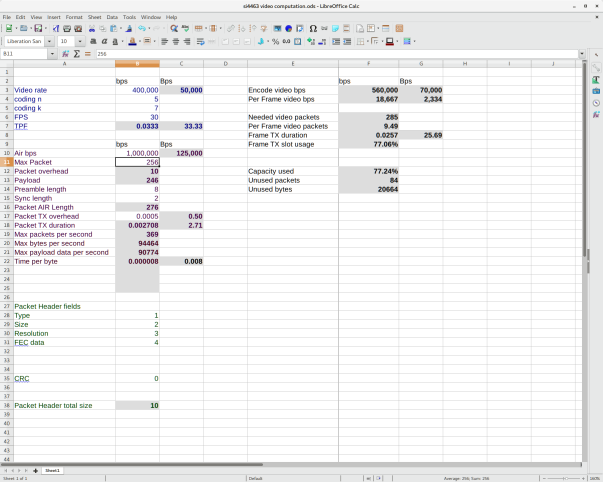In my last post I talked about using the si4463 chip to send video, telemetry and RC data to the quadcopter. I calculated the bandwidth and it seemed that 500kbps video with 5/7 FEC coding should be possible.
I wrote the code, linked everything together and it kind of worked. The video was stable, not many packets lost but the latency was pretty bad. It got up to ~200ms from the current 100-130ms but worse than this, the video was very choppy. I managed to narrow it down to the H264 codec in the raspberry pi: the bitrate you configure in the codec is an average bitrate, per second. Each frame can vary a lot in size as long as the average is preserved (with some allowed over and undershoot). I got I-frames of 12-16KB and P-frames of 400-500 bytes (at 30 FPS). The I-frames took way longer to send than the P-frames and this resulted in a choppy video. I tried to play around with settings – like disabling CABAC and activating CBR but nothing made the bitstream uniform enough.
The final, biggest problem was actually caused by the RF4463F30 module – and it’s the same problem I had months ago when I tried to use them: they introduce a LOT of noise in the power line, enough to cause all the I2C chips on the quad to fail.
I tried all kinds of capacitors to decouple the module and reduced the noise a lot but there seem to always be some capacitive/inductive coupled noise persisting.
In the end I just gave up and went back to the RFM22B chip which just works. For video I went back to the monitor mode/injection system but did change the modulation to CCK, 5.5Mb to hopefully reduce the possibility of interference with other 2.4Ghz RC systems. CCK is spread spectrum similar to DSSS and should be able to coexist with RC systems around.
So yeah, FPV through a very constrained channel with a temperamental H264 encoder and a very temperamental transceiver module is not fun…


